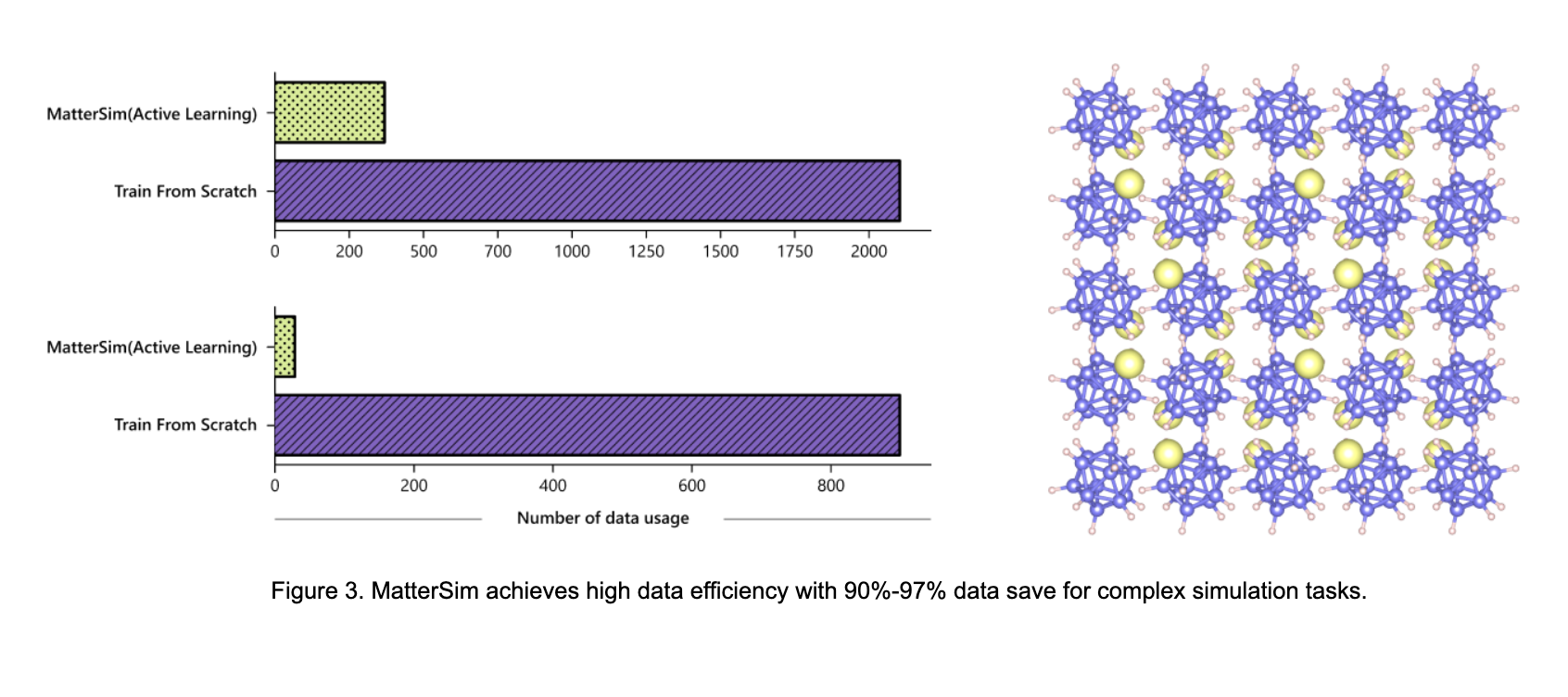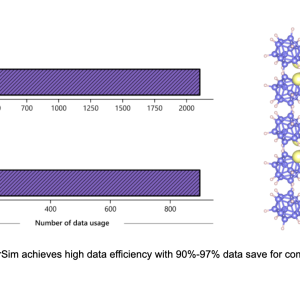

Methods like Molecular Dynamics simulations, Quantitative Structure-Property Relationships (QSPR), and First-Principles calculations are based on scientific principles and complex mathematical models. They require expensive computational resources, have limited accuracy with complex models, and heavily depend on the quality and quantity of available data. These methods for material development rely on physical synthesis and testing, which are expensive, time-consuming, and often impractical for exploring the vast design space of materials, especially considering the different environments in which they can operate.
Microsoft researchers developed MatterSim to address the need for accurate prediction of material properties in the quest for innovative materials crucial for various applications such as nanoelectronics, energy storage, and healthcare. The key challenge is caused by the intricate atomic interactions within materials, which are influenced by multiple environmental factors such as temperature, pressure, and elemental composition. The Microsoft research aims to develop a computational framework that can efficiently and accurately predict material properties across a broad range of elements, temperatures, and pressures, enabling in silico material design without the need for extensive physical experimentation.
Current methods for predicting material properties often rely on statistical approaches, which may struggle to capture the intricacies of atomic interactions accurately. Additionally, these methods typically require extensive computational resources and may not scale well to comprehensively explore the vast design space of materials. In contrast, the proposed method, MatterSim, leverages deep learning techniques to understand atomic interactions from the fundamental principles of quantum mechanics. MatterSim is trained on large synthetic datasets that are created by combining active learning, generative models, and molecular dynamics simulations. This makes sure that the material space is fully covered. The large dataset also allows MatterSim to accurately predict energies, atomic forces, stresses, and various material properties across the periodic table, spanning temperatures from 0 to 5000 K and pressures up to 1000 GPa. Additionally, MatterSim offers customization options for intricate prediction tasks by incorporating user-provided data, making it adaptable to specific design requirements.
MatterSim’s methodology is built on deep learning and active learning techniques, allowing it to comprehend atomic interactions at a fundamental level. By training on large-scale synthetic datasets, MatterSim learns to predict material properties with high accuracy, rivaling that of first-principles methods but with significantly reduced computational cost. The model serves as a machine learning force field capable of simulating various material properties, including thermal, mechanical, and transport properties, as well as phase diagrams.
MatterSim achieves a ten-fold increase in accuracy for material property predictions at finite temperatures and pressures compared to existing state-of-the-art models. Furthermore, MatterSim exhibits high data efficiency, requiring only a fraction of the data compared to traditional methods to achieve comparable accuracy, making it particularly suitable for complex simulation tasks. By bridging the gap between atomistic models and real-world measurements, MatterSim offers a powerful tool for accelerating materials design and discovery. The integration of MatterSim with generative AI models and reinforcement learning has further scope to enhance its potential role in guiding the creation of materials with desirable properties. Predicting material properties under varied conditions essentially lowers costs, promotes innovation, improves design, and guarantees product safety. This ultimately paves the way for better materials and a deeper scientific understanding.
In conclusion, MatterSim represents a significant advancement in the field of materials science by addressing the challenge of accurately predicting material properties across a broad range of elements, temperatures, and pressures. By leveraging deep learning techniques and large-scale synthetic datasets, MatterSim achieves high accuracy in material property prediction while offering customization options and high data efficiency. This enables researchers to expedite material design and discovery processes, ultimately developing novel materials specifically designed for diverse applications.
Check out the Paper and Blog. All credit for this research goes to the researchers of this project. Also, don’t forget to follow us on Twitter. Join our Telegram Channel, Discord Channel, and LinkedIn Group.
If you like our work, you will love our newsletter..
Don’t Forget to join our 42k+ ML SubReddit
The post Microsoft Researchers Introduce MatterSim: A Deep-Learning Model for Materials Under Real-World Conditions appeared first on MarkTechPost.